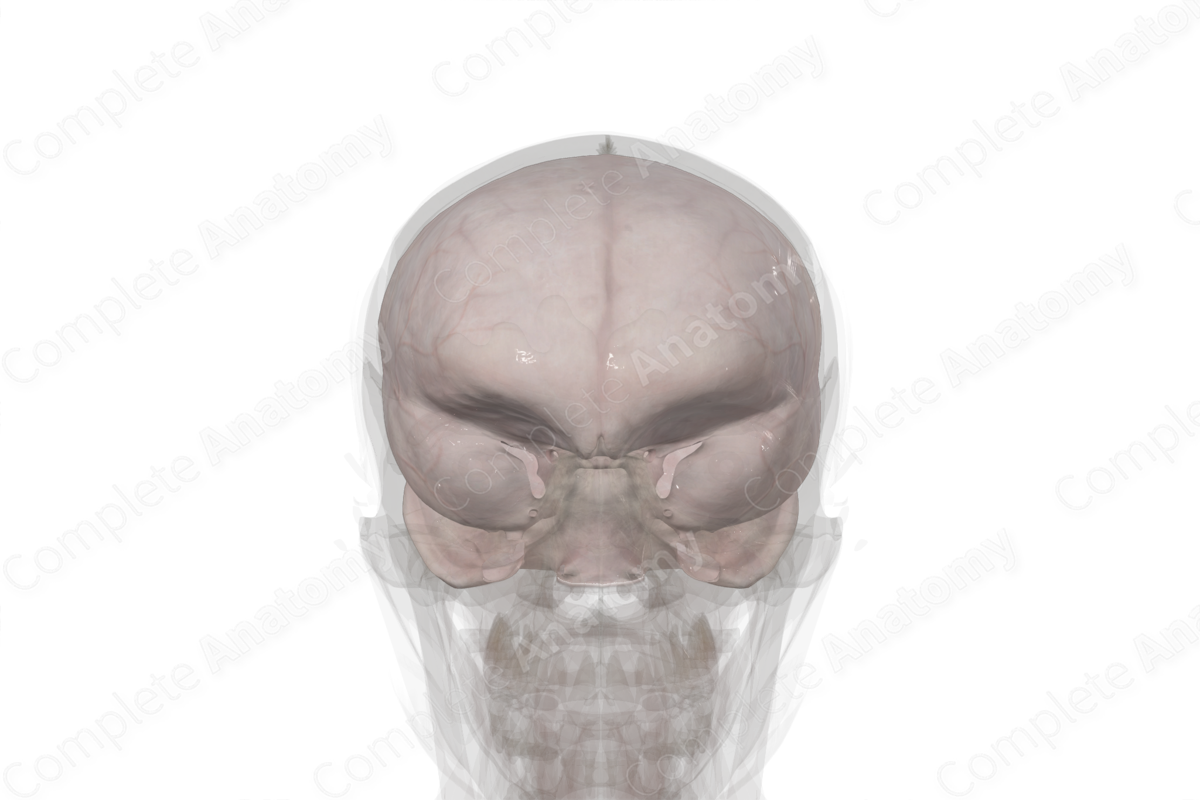
Structure
The cranial dura mater is the most superficial of the three meningeal layers and covers the entire brain down to the foramen magnum, where it is continuous with the spinal dura mater. The cranial dura mater is a tough, fibrous, two-layer structure with the outer or periosteal dura forming the periosteum of the cranial bones and the inner of meningeal dura laying against the underlying arachnoid mater. For the most part these two dural layers are adhered, but they can be visualized at some dural sinuses where the venous cavity separates the periosteal and meningeal dural layers. The dura is pierced by bridging veins, which carry blood from the brain; emissary veins, which bring blood from the overlying bone; and arachnoid granulations, which bring cerebrospinal fluid to venous sinuses.
Related parts of the anatomy
Anatomical Relations
The periosteal cranial dura mater is adherent to the inner surfaces of the cranial bones, especially along the sutures and the foramina at the cranial base. It is continuous with the pericranium, covering the outer surfaces of the cranial bones, through the cranial sutures and the foramina. Additionally, it is continuous with the periosteum of the orbit via the superior orbital fissure.
List of Clinical Correlates
- Epidural hematoma
- Subdural hematoma
- Headache




